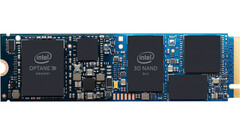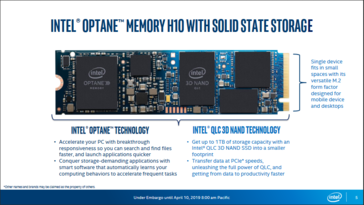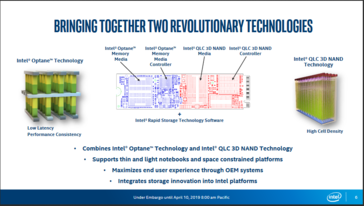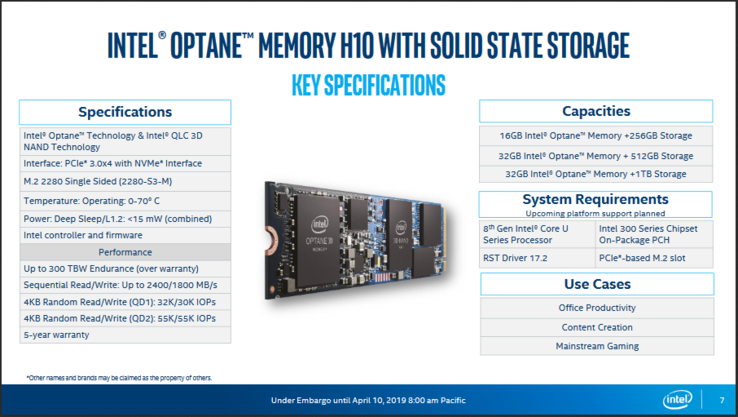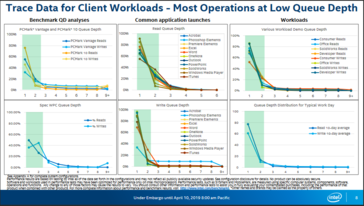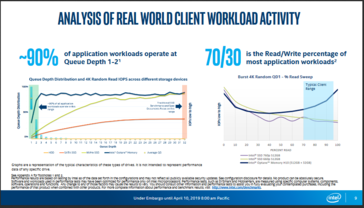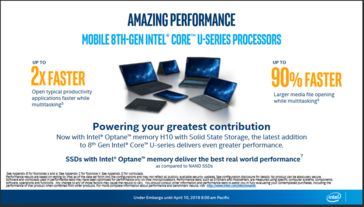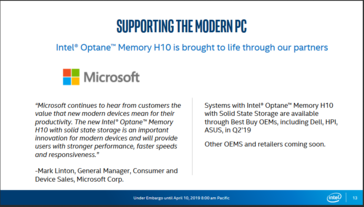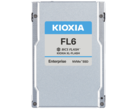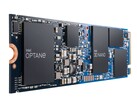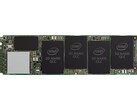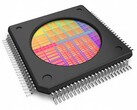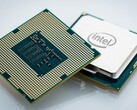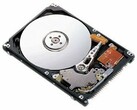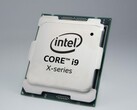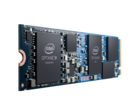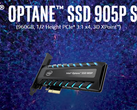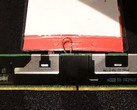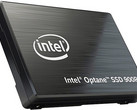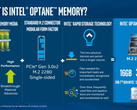Intel first talked about its Optane Memory H10 with QLC NAND back in January. Codenamed 'Teton Glacier', Optane H10 combined 3D Xpoint and QLC NAND storage on a single M.2 2280 stick. Today, Intel offered a deep dive into the technology and how it benefits PCs especially, laptops.
Optane for 3D NAND
While we've seen Optane being helpful in accelerating HDDs and even SATA SSDs. The Optane H10 is perhaps the first to accelerate an NVMe drive. Basically, the H10 PCB consists of two zones — one part has the Optane memory and controller while the other houses the QLC 3D NAND media and its controller. The QLC NAND is essentially a miniaturized Intel 660p SSD.
Optane H10 Specifications
The Optane H10 is available in three capacity tiers — 16 GB Optane + 256 GB storage, 32 GB Optane + 512 GB storage, and 32 GB Optane + 1 TB storage. The Optane H10 requires a PCIe 3.0 x4 M.2 slot and works only with 8th generation Intel Core U series processors and an Intel 300-series PCH. Support for upcoming platforms is being planned.
Data transfer and caching is controlled by Intel Rapid Storage Technology (RST) drivers v17.2 or higher, which are required to use the Optane H10. We'll have to see whether RST enables seeing this as one composite disk or as two individual drives. This also brings up the question of whether lane bifurcation is needed between the Optane and storage controllers. Gauging from the relatively lower read/write speeds when compared with top-end Samsung NVMe SSDs, it does look like some of the PCIe bandwidth is taken up by 3D Xpoint. We'll update this article if we receive an update from Intel in this regard.
Intel says that Optane H10 can offer an endurance up to 300 TBW with sequential read speeds up to 2400 MBps and write speeds up to 1800 MBps. The drive is rated for 32K/30K read/write 4KB random QD1 IOPS and 55K/55K read/write 4KB random QD2 IOPS. Intel also offers a 5-year warranty for the Optane H10.
Performance
Intel showed off some performance metrics from their in-house testing of the Optane H10. Intel is positioning the H10 for all kinds of workloads including office productivity, content creation, and gaming. Of course, the best results would be seen in operations that involve high read/writes to the disk such as when using the drive as a scratch disk for Photoshop or Premiere.
According to Intel, Optane H10 allows most applications to operate between QD1 to QD2. Compared to traditional NVMe or SATA SSDs, Optane H10 allows for higher IOPS right in the QD1 to QD2 range and can achieve optimal QD distribution whereas the NVMe, for example, is shown to have optimal distribution only after QD10. Theoretically, this should result in extremely low latency, which is the benefit of Optane after all. However, it needs to be evaluated what difference it makes to practical use. The Optane H10 also showed good % read sweeps in random 4KB burst QD1 tests implying that the drive can sustain higher IOPS compared to other Intel SSDs.
Availability
Intel says notebooks with built-in Intel Optane H10 would be available from OEMs such as Dell, HP, and Asus in Q2 2019 with other OEMs and retailers coming soon. Unlike other Optane variants, it seems like the Optane H10 is restricted to notebooks powered by 8th gen U-series processors at the moment. Optane H10 aims to provide the best of low application launch times of 3D Xpoint and fast read/write speeds of QLC NAND on a single M.2 drive. While this is great for space constrained ultrabooks with just a single M.2 drive, desktop PCs also stand to gain well with this technology.
Source(s)
Intel Press Brief




